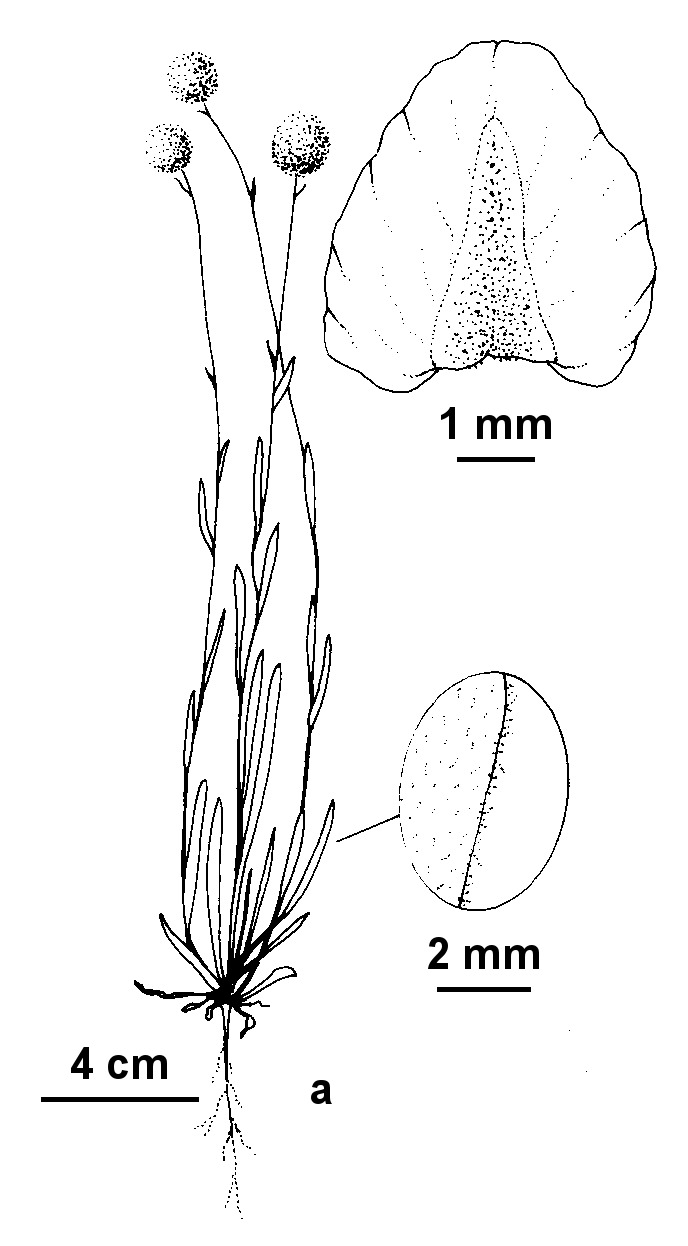Craspedia haplorrhiza
J.Everett & DoustAnnual or perennial with 1-many flowering scapes 7–15 cm high; taproot simple, slender. Leaves basally rosetted and cauline, spathulate to oblanceolate, 1–8 cm long, 2–12 mm wide, obtuse to broad-acute, pale green, with glandular hairs and multiseptate hairs and with sparse fine woolly hairs on the margins. Inflorescence golden-yellow, spherical, 7–28 mm diam., with c. 30–60 capitula; scape straw-coloured to reddish, glandular with translucent globules and a few multiseptate hairs. Capitula prominently pedunculate, with 6–11 florets; bract subtending capitulum ovate, cordate to almost circular, decurrent on the peduncle, margins hyaline, stereome small, ovate to triangular, glandular, base finely and sparsely woolly at the base. Cypselas 1.5–2 mm long, 0.5–1 mm wide; pappus 2–3 mm long Flowers spring and early summer.
LoM, MuM, VRiv, MSB, RobP, CVU, DunT. Also WA, SA, Qld, NSW. Usually on heavy soils or loamy sands, particularly on floodplains and seasonally wet depressions.
Everett, J. (1999). Craspedia. In: Walsh, N.G.; Entwisle, T.J., Flora of Victoria Vol. 4, Cornaceae to Asteraceae, pp. 758–764. Inkata Press, Melbourne.
 Spinning
Spinning



